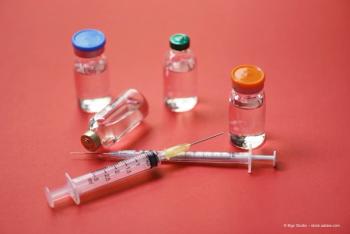
ASRS 2024: The DAVIO phase 2 trial and upcoming LUGANO phase 3 trial
Yasha Modi, MD, spoke with Modern Retina about the ASRS 2024: The DAVIO phase 2 trial and upcoming LUGANO phase 3 trial at the annual ASRS meeting in Stockholm, Sweden.
Yasha Modi, MD, spoke with Modern Retina about the DAVIO phase 2 trial and upcoming LUGANO phase 3 trial at the annual ASRS meeting in Stockholm, Sweden.
Video Transcript:
Editor's note: The below transcript has been lightly edited for clarity.
Yasha Modi, MD:
Hi, I'm Yasha Modi. I'm one of the retina specialists at NYU Langone in New York City. We're here at in Stockholm at the ASRS conference, and I'm presenting, or talking about a wonderful presentation given by Veeral Sheth on some of the EyePoint data. Primarily, this was focused on the DAVIO 6-month data.
So essentially, these patients were loaded with aflibercept injections, and then either continued on aflibercept, every 8 week, injections, versus getting the DURAVYU insert. And it ultimately looked at the stability of this medication and the need for rescue treatment. And actually, one of our take home messages was that 6 months after implantation of the device, about 60% of patients were rescue free, which was a pretty incredible results. Of course, when you think about, you know, 60% of your patients going 6 months without rescue, I think that's a really outstanding result.
Of course, we are now in a marketplace where we have you know, what some would consider third generation anti VEGFs with faricimab, as well as 8 mg aflibercept, but many of those patients are not likely in treatment, previously-treated patients to go out 6 months. So I think the entire marketplace of TKIs is certainly one that can lower the potential burden of treatment for these patients. Yeah, so some 12 month data has been presented in short snippets is some of that data looks equally as promising, where you still have a large percentage of patients going out up to 10 months from the time of their injection, and still remained injection free.
Now, what's interesting about the DAVIO study was that the control arm could also be rescued. So that is if patients were getting aflibercept every 8 weeks, but they fulfilled the criteria for rescue, they would get injections at shorter intervals, basically every month. And something like at the end of the 1 year study, something about 25% of patients ended up getting rescue in the control arm too. So really goes to show you a couple of things. The TKI implants are being implanted in patients with heavy treatment burden and are demonstrating excellent durability out to 10 months after the implant. Now when we look at the phase 3 study, what's going to happen is these patients are going to be dosed every 6 months. So now we're starting to understand how we may be using this potentially in clinical practice, where if there's positive results from the phase 3 study, we may be sort of using this as sort of a basal level 0 order kinetics injection every 6 months, and then potentially doing rescue treatment with anti-VEGF as well.
The phase 3 study has been designed. There are a few critical differences. Remember, in the DAVIO study, these are all patients who were previously treated. In fact, some of them were heavily treated. The average number of injections in the year prior to treatment was about 10 injections. In the phase 3 LUGANO study. These are going to be patients that could be previously-treated or treatment-naive. So that's 1 major difference. And rather than waiting until the point where they need rescue treatment in the DAVIO study, these patients are going to be reduced every 6 months. So that's sort of a critical difference between the LUGANO study and the DAVIO study.
Newsletter
Keep your retina practice on the forefront—subscribe for expert analysis and emerging trends in retinal disease management.










































